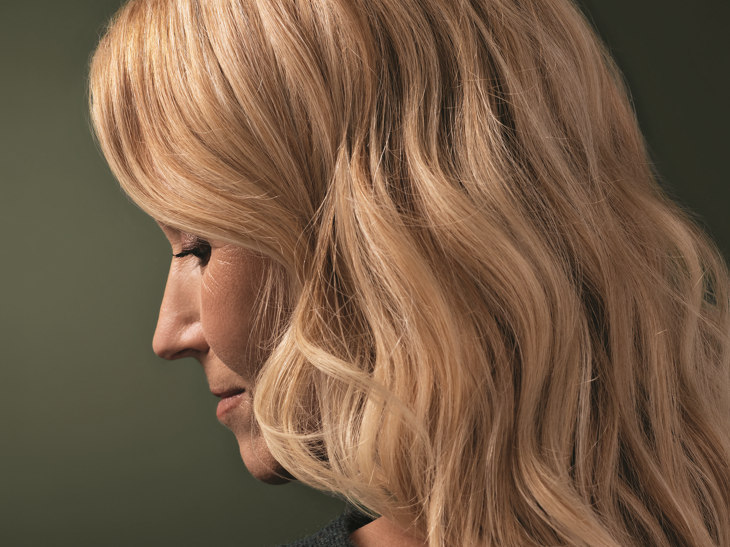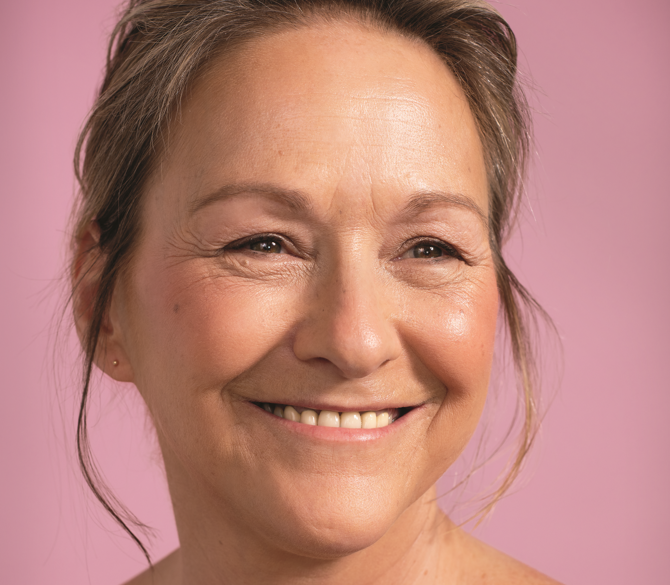Thinning hair affects some people more than others. Why do we lose hair and how can we keep it healthy for as long as possible?
By Mariève Inoue
It’s natural to lose hair. “Normal hair loss can vary from 25 to 100 strands a day,” says William Matthew Yee Sui Chun, the medical communications manager for Vichy Laboratoires.
In addition, seasonal hair loss, which happens in the spring and summer, causes us to shed more hair than usual. However, “seasonal hair loss usually doesn’t affect long-term hair loss,” says Diane Donofrio, a trichology (hair health) technician and the vice-president of Capilia, a North American chain of hair-health centres. “It’s a natural phenomenon that’s actually healthy for your scalp.”
COVID-19?
According to Donofrio, many people aged 50 or over are affected by hair thinning or loss, including an increasing number of women. And since the beginning of the COVID-19 pandemic, the number of people seeking professional advice about thinning hair seems to have increased. “This could be linked to the fever or to the stress caused by getting the disease or simply living through the pandemic,” Chun says. Another possibility is that people “are committing more time to self-care than in the past,” Donofrio says.
Causes
The causes of alopecia, the medical term for hair loss, vary, often with more than one. “The types of alopecia most often mentioned are alopecia areata, telogen effluvium, and androgenetic alopecia,” Chun says. “All types of alopecia can occur in both women and men.”
Alopecia areata is an autoimmune condition that most often leads to patchy hair loss, whereas telogen effluvium encompasses several other types of usually temporary hair loss caused by an interruption of the hair’s growth cycle. Androgenetic alopecia is the most common cause of hair loss in men. The hereditary condition is caused by the conversion of testosterone into the more active dihydrotestosterone— both of these are androgen hormones. Although the condition is more common in men, women can also have it. “It’s caused by androgens, which women also produce, but for most of their lives, estrogen production helps fight off the androgens’ effects,” Donofrio says. The condition is often more prominent in postmenopausal women, after the body has greatly slowed its estrogen production. “The prevalence of androgenetic alopecia is much lower in East Asians and people of African descent than in Caucasians,” Chun says.
Several things can cause hair loss in women, from certain medications and hormonal variations due to pregnancy and menopause to an emotional shock, a thyroid gland imbalance, and a nutritional deficiency. “An oily scalp can also contribute to hair thinning by up to 40 or 50 percent,” Donofrio says. When you’ve had an oily scalp all your life, the sebum creates deposits that end up blocking your hair follicles and leading to thinning hair.
Solutions
Even if your hair has already begun thinning, it’s not too late to act. There are various treatments that work, but it’s important to find one that addresses the cause of your hair loss as early as possible.
“As soon as you suspect you might have alopecia, it’s crucial to see a dermatologist or health professional so that he or she can point you towards an adequate treatment,” Chun says. The last thing you should do is waste months trying solutions that aren’t meant for you.
There are various options to consider, depending on the stage of hair loss.
Prevention
The idea is to create an environment that promotes hair growth through certain lifestyle habits:
Eat healthily and drink a lot of water.
“A diet rich in vitamins and minerals will help prevent certain deficiencies that can contribute to hair loss,” Chun says.
Maintain good hair hygiene.
Choose hair-care products suited to your hair and scalp type, and favour products that contain “active ingredients that deposit nutrients on your scalp and won’t leave any residue behind,” Donofrio says.
Adjust how you wear your hair.
“Wearing your ponytail or braid a little more loosely will help reduce tension on your roots,” Chun says.
Thinning Hair
A sure sign that your hair is beginning to thin is that the diameter of your ponytail has diminished. This means it may be time to check in with a professional such as your family doctor, a dermatologist, a pharmacist, or a trichologist at a hair clinic. Preliminary blood work can let your doctor know if there’s a medical reason—such as a vitamin deficiency or hormonal imbalance—for the problem. A trichologist can analyze your scalp and guide you to an action plan that may include in-salon treatments ($90 to $150) and products to use at home.
In addition to shampoos and conditioners, certain overthe- counter treatments and serums can help limit hair loss and, in certain cases, promote regrowth. You can also try taking vitamin supplements, especially if your hair loss is linked to poor diet. Some ingredients to look for: iron, biotin, zinc, and vitamin B12.
Hair Loss
At this stage, your hair may have begun to thin at the temples, your part may be wider, or perhaps the top of your scalp is showing (especially in men). There’s no need to panic. There are several potential solutions, some of which can be combined depending on your type of alopecia and budget.
Laser therapy.
“Laser therapy stimulates cell renewal and dilates the blood vessels, thus increasing blood flow and nutrient supply to the follicles,” Donofrio says. The huge advantage of these treatments is that they’re done at home using a helmetlike device in just a few minutes a day, without any physical pain or side effects. “Clinical studies have shown great results,” Donofrio says. Cost: $700 to $5,000 per device.
Platelet-rich plasma (PRP) injections.
These help slow hair loss and stimulate regrowth with convincing results. The treatment consists of injecting plasma extracted from a sample of your blood, which is rich in growth factors. Three treatments are given, one every three or four weeks, with a follow-up every eight to 12 months. Cost: $500 to $900 per treatment.
Mesotherapy.
This technique is relatively new in North America; it involves creating microperforations in the scalp and infusing it with a mix of vitamins, proteins, and minerals to promote hair health and growth. The treatment is done once a month for six months. Cost: About $350 per session.
Medication.
The two most popular medications for hair loss are minoxidil (Rogaine), which is applied topically, and finasteride (Propecia), which is taken orally.
The former treats different types of alopecia. “Initially, this medication was developed to treat hypertension, but its effects on vascularization, and therefore blood flow to the scalp, as well as other factors involved in hair growth later came to light,” Chun says.
The latter inhibits the enzyme responsible for androgenetic alopecia and is therefore most often taken by men—but requires a doctor’s prescription, as it can have side effects.
Correction
In a case of advanced baldness, hair correction may be a better option.
Hair transplants have evolved a lot since they first appeared. There are currently two types: follicular unit extraction (FUE), in which individual follicular units (groups of follicles) are taken from your donor zone, cleaned, and then transplanted, and follicular unit transplant (FUT), a similar procedure involving a strip of follicles. “FUT leaves a long scar at the back of the head, which can be quite apparent if you keep your hair short.
However, the follicle survival rate is higher,” Donofrio says. Cost: $5,000 to $20,000, depending on the treatment zone.
Camouflage
If your goal is to conceal hair loss or if your donor zone isn’t full enough for a transplant, there are two solutions:
Micropigmentation.
Micropigmentation is a type of tattoo done in the upper layers of the skin to imitate the look of a shaven follicle. The results need to be refreshed every two or three years. Cost: A few hundred dollars, depending on the zone to be covered.
Hair prostheses.
Hair prostheses are much more refined than they used to be and can look very natural. However, they can cost several thousand dollars a year, as they need to be replaced regularly.
Photo credit: Marc-Antoine Charlebois






